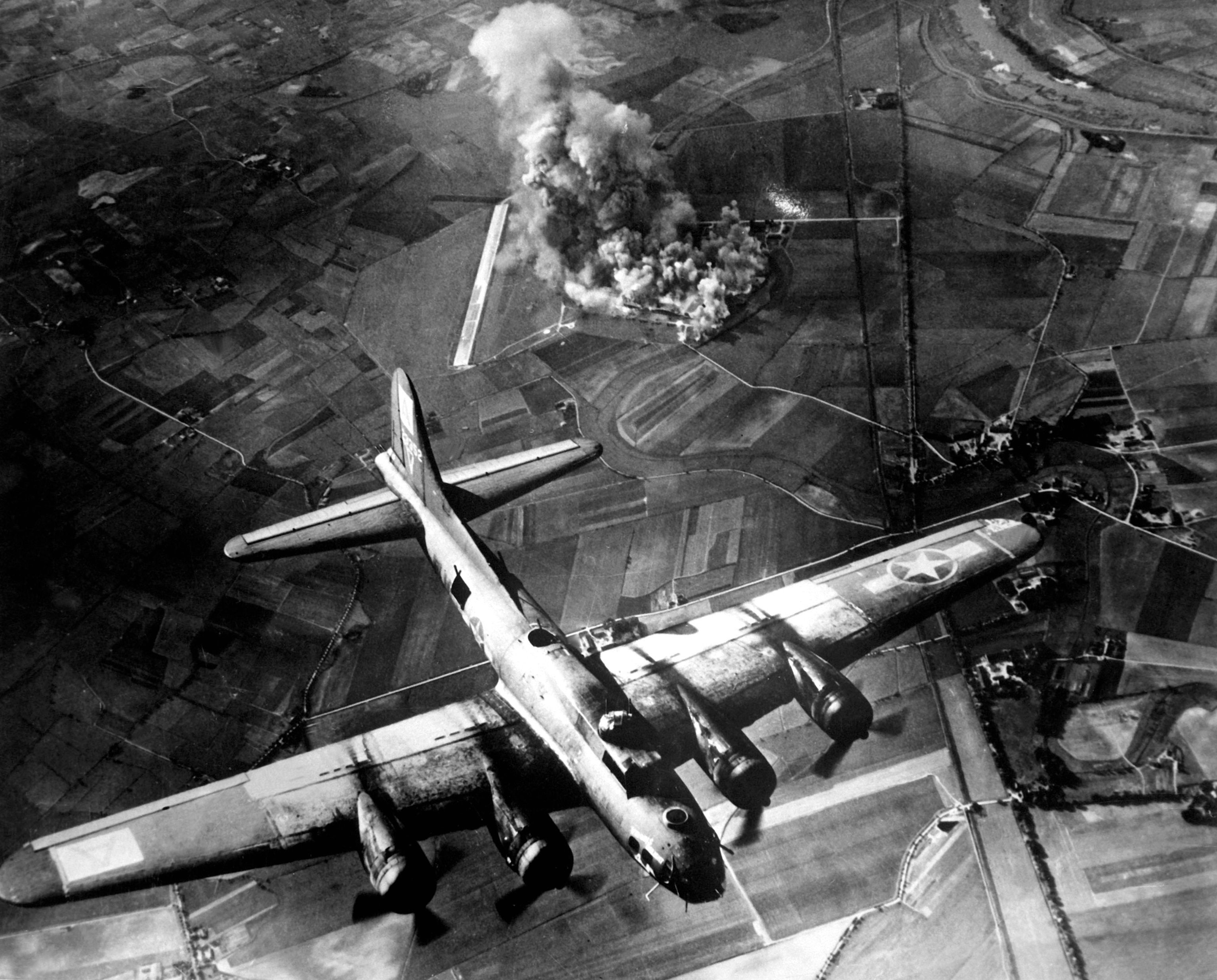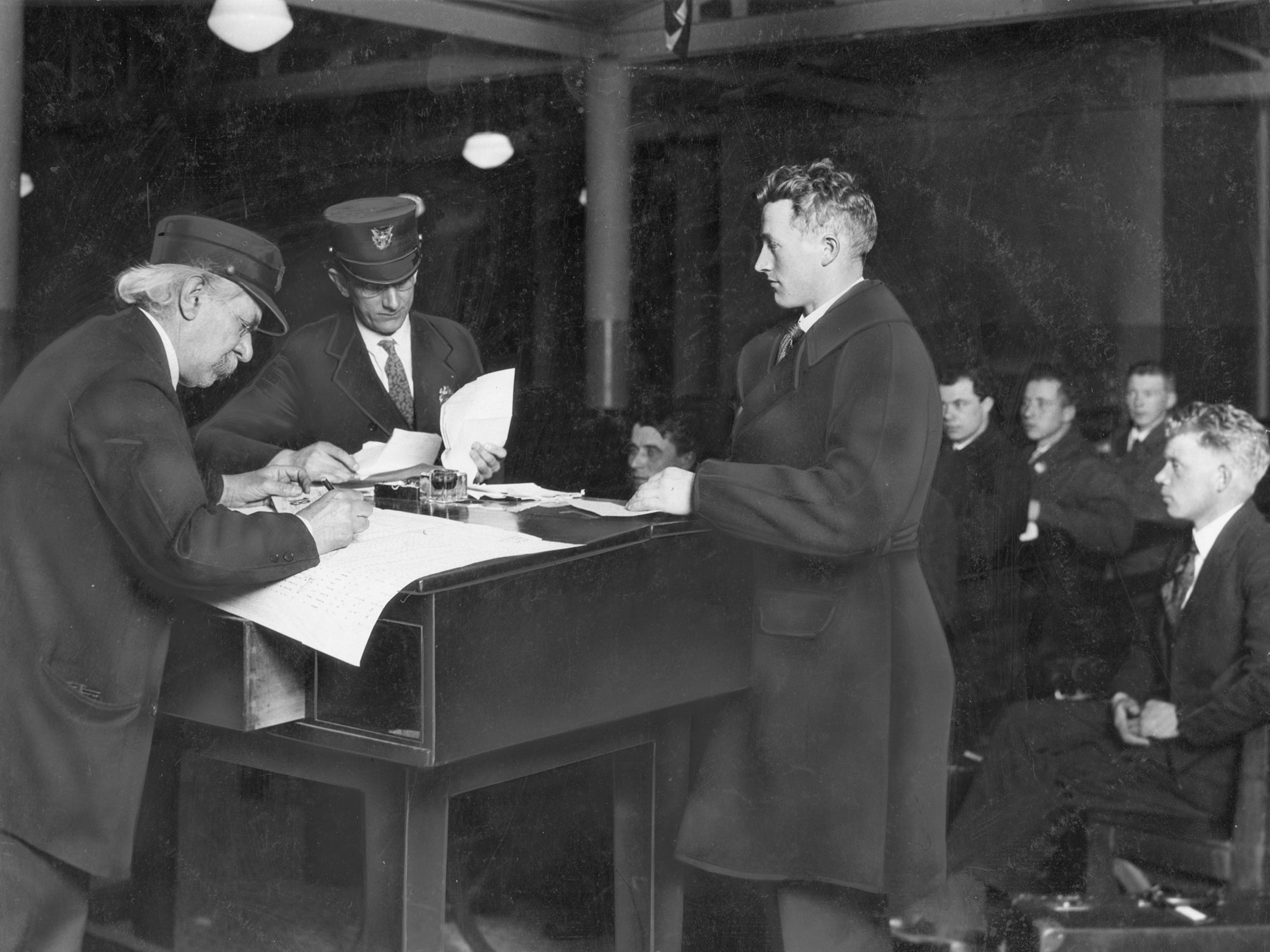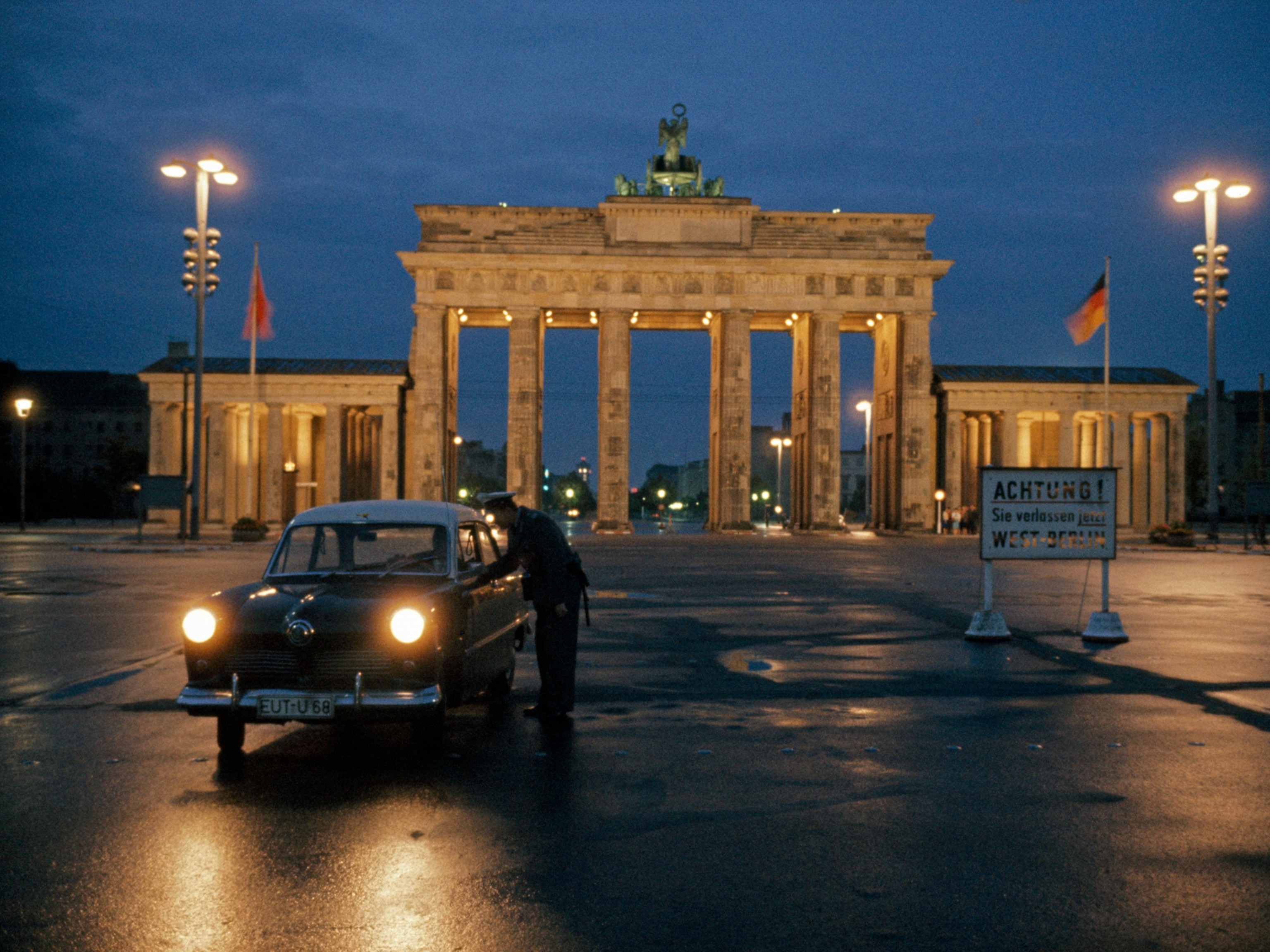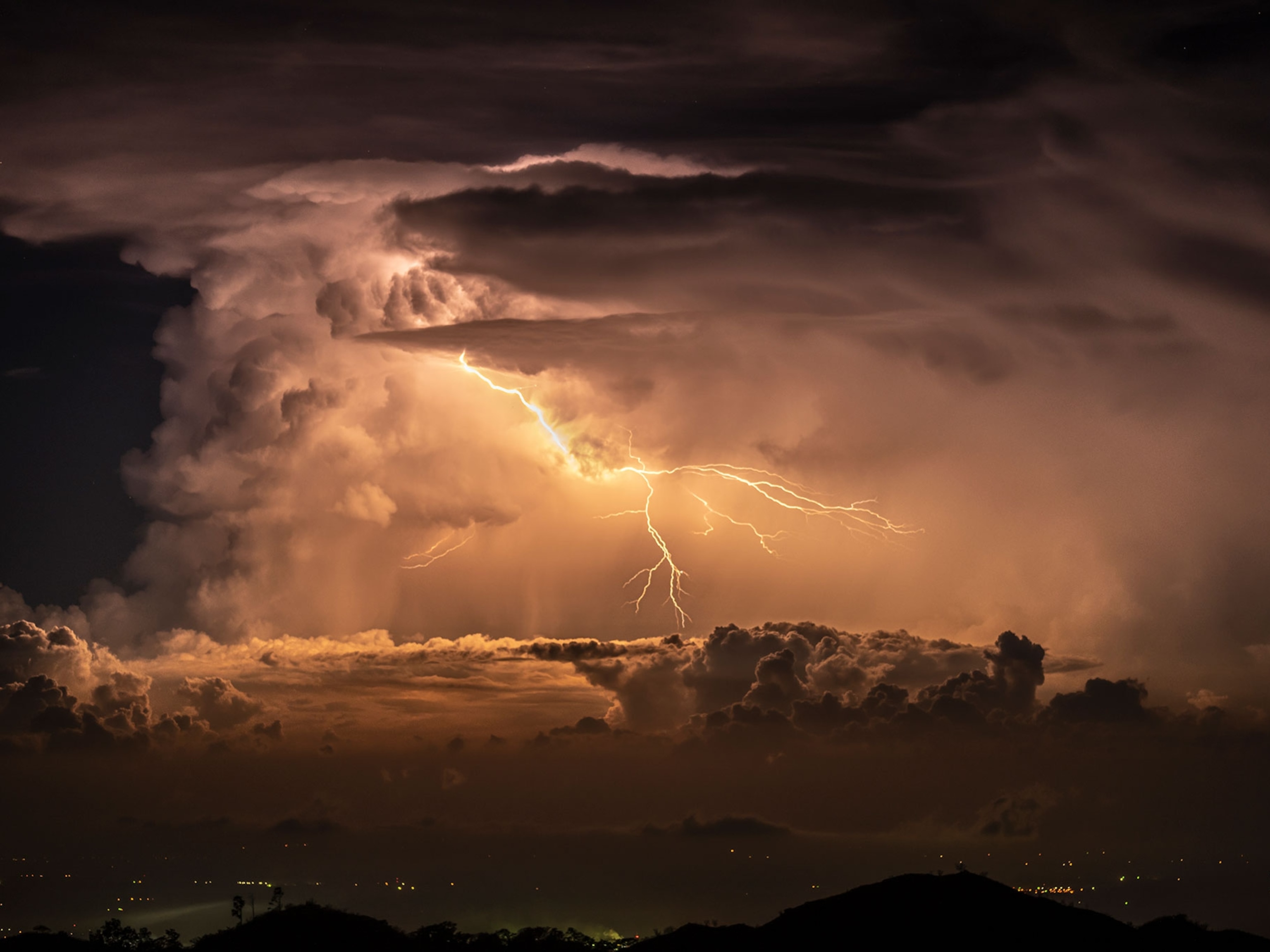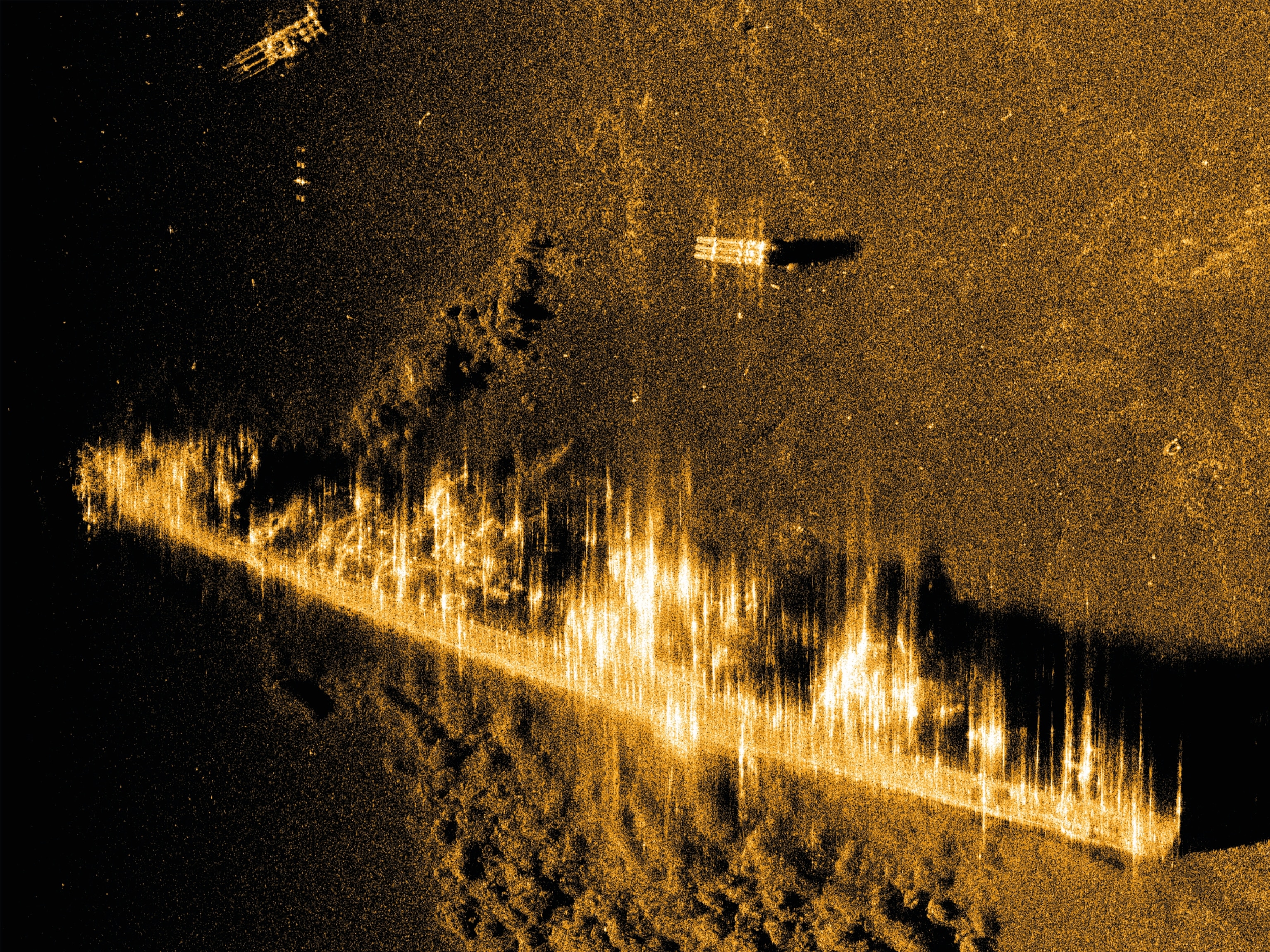Allied bombing raids across Europe during the World War II wreaked devastation on the ground, but a new study suggests that the impacts of the shockwaves were surprisingly widespread—even rippling to the edges of space.
The study, recently published in the journal Annales Geophysicae, documents the impacts of these bombs in the Earth's ionosphere—a layer of Earth's atmosphere between roughly 50 and 375 miles high that's charged, or ionized, by solar and cosmic radiation. The data suggest each bombing raid released the power of hundreds of lightning strikes, reducing the density of negatively charged electrons in the ionosphere.
While the effect of the bombing raids on the ionosphere was minor and only lasted a few hours, the unusual approach that the researchers took to determine the atmospheric disruptions may eventually help scientists hone atmospheric models and more accurately predict ionospheric disturbances—the most severe of which can cripple communications and global positioning systems (GPS).
Looking to the Past
The ionosphere is far from a constant, wavering primarily with the sun's activity. Solar flares, solar winds, and geomagnetic storms can all cause its electron density to rise and fall. But our fiery companion isn't the only influence—thunderstorms and even large earthquakes can impact the ionosphere.
Based on existing science, the ionosphere is "a lot more wobbly than it should be," says Chris Scott, space scientist at the University of Reading in the United Kingdom.
To better understand the impacts of different events on the ionosphere, Scott and colleague and paper co-author Patrick Major looked for examples of other explosions with equivalent energies to the electrical activity of thunderstorms, and found them in an unexpected place: records of World War II bombing raids.
The researchers analyzed data on Allied air raids over Europe, using 152 records of major bombing periods between 1943 and 1945 for which there were strong records of the types and timings of explosives dropped. Then they compared the incidences of the raids to atmospheric measurements collected by the Radio Research Station in Slough, England.
While it's challenging to pick apart the exact effects of the bombings on the ionosphere, the researchers discovered a significant association between bombing raids using at least 100 to 800 tons of explosives, and changes, or “wobbles” in the ionosphere that occurred three to seven hours later. (For comparison, one metric ton of TNT has roughly the same explosive energy as a cloud to ground lightning strike.)
Of course lightning and bombs are very different, Scott notes. But the observed link reinforces the idea that other natural phenomenon like lightning could have an effect.
Scott and Major had also looked at data from the German bombing of London in 1940 and 1941, known as the “London Blitz.” But this bombing offensive was so continuous that there weren't intervening days without explosions that would allow the researchers to establish background ionospheric changes for comparison to the atmospheric data.
The fact makes for a sobering realization, Scott notes. “Two of my aunts were killed during the London Blitz, age nine and 11,” he says. “So I know our family has seen the impact that such conflict can have.”
Wobbly Skies
This novel use of data from historic events to better understand our atmosphere has been received with surprise by the scientific community.
“I've never seen anything like that,” says Christopher Fallen of the University of Alaska Fairbanks’ Geophysical Institute. Fallen, who is also chief scientist of the High Frequency Active Auroral Research Program (which studies ionosphere properties and behavior), notes that more sophisticated modeling would help tease apart the exact mechanisms behind the effects of the bombing raids. But the work is an interesting way into a tricky question. “It certainly opened my mind to a different take on ionosphere science,” he says.
Related: 13 Striking Pictures of Extreme Weather
And a better understanding of “wobbles” in the ionosphere and the events that cause them can only help us better understand its impact on the modern technology we rely on, including radio communications and GPS systems, explains Mihail Codrescu of the National Weather Service's Space Weather Prediction Center (SWPC), an agency of the National Oceanic and Atmospheric Administration. The SWPC works to help people who might suffer the technology impacts of space weather, and warn them of potential disruptions.
For instance, during one particularly intense solar storm in October of 2003, the disruption of the ionosphere had widespread effects, and even forced aircraft to reroute due to GPS inaccuracies.
Scott looks forward to poring though more archives to help develop new models of atmospheric changes. “I think for me it's really redoubled my enthusiasm to try and digitize this historical data,” he says. “There's lots and lots of data sitting unusable at the moment in books on shelves.”
